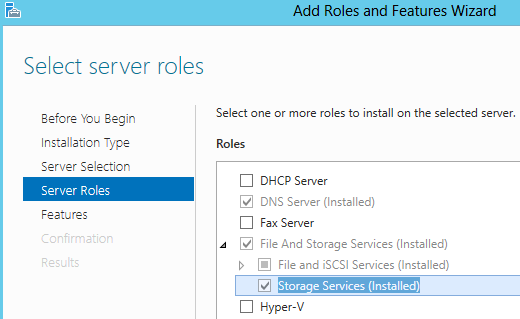Configure Storage Space in Server 2012
Storage Space is a new feature in Server 2012 and Windows 8 operating systems. The fundamental concept of storage space is, it pools physical disks together and make it look like a single disk to the operating system. You can add any type and size of physical disks to the pool and create resilient disk. Storage space works on both NTFS (New Technology File System) and ReFS (Resilient File System) volume. So, let’s configure storage space in Server 2012. There are four simple steps to configure storage space in server 2012. They are: –
- Physical Disk: – The first step is to have some physical disks. You can have a minimum of one disk. But to be able to configure resiliency you need at least two or more physical disks. Physical disks are used to create storage pools.
- Storage Pool: – In storage pool, physical disks are grouped. To add physical disks to storage pool, the disk must not be formatted and must not be associated with other storage pool. Storage pools are used to create virtual disk (storage space).
- Virtual Disk (Storage Space): – These are the disk that will be used by the operating system or user after creating volumes of the disk. Virtual disk can be fixed or thin provision. In thin provisioning, disk spaces are added as required on the run. But in thick provisioning, storage capacity is fixed and is allocated while creating the virtual disk.
- Disk Drive: – These are the volumes or partitions created on virtual disks. These disks are shown in My Computer with drive letter.
Configure Storage Space in Server 2012
To configure storage space, Storage Services server role must be installed. This server role is installed by default in Server 2012.
As you can see below, I have two new physical disks, disk 1 and disk 2. We will combine these two disks and create some storage pools. Remember, after initializing the disks do not format it.
Step 1: Create Storage Pool
To create storage pool open Server Manager. Click File and Storage Services on the left pane. Then click Storage Pools from the pane. On Storage Pool pane, click Tasks and click New Storage Pool.
New Storage Pool Wizard pops up. In the Before you begin page, click Next. Here, type the name of the storage pool and a little description. Click Next again.
Now select the available physical disks. Click Next.
Review the settings and click Create.
Click Close after the wizard finishes the configuration. We have successfully created the storage pool called StoragePool1.
Step 2: Create Virtual Disk
On the virtual disks pane, click Tasks and select New Virtual Disk.
New virtual disk wizard pops up. Click Next on before you begin page. Choose the available storage pool from which virtual disk will be created. I will choose the pool that I created earlier.
Now type the name and description for virtual disk. Click Next.
Choose the storage layout. Here, I will choose simple. In simple virtual disk data is striped across physical disks and does not provide fault tolerance. Now click Next.
Select the provisioning type. I will choose thin provisioning because thin provisioning is more efficient and economic. Click Next.
Specify the size of virtual disk. I will specify 15 GB and click Next.
Review the settings and click Create to create the virtual disk.
Now view the result. Check the option, Create a volume when this wizard closes. Click Close.
Create a new volume wizard pops up. Click Next on Before you begin wizard. On Server and Disk window, select server and disk and click Next.
Step 3: Create Volume
Specify the size of the volume. I will specify 8 GB. We can later create another volume from remaining space from the same disk. Click Next.
Specify the drive letter and click Next.
Specify the File System Settings. Select the file system and type volume label.
Review the configuration and click Create.
You will now see new 8 GB volume in My Computer.
In this way, you can configure storage space in Server 2012.



















